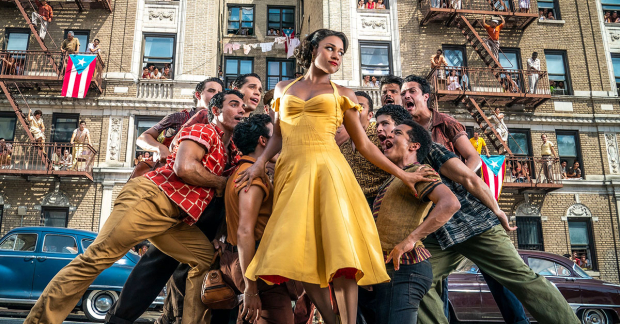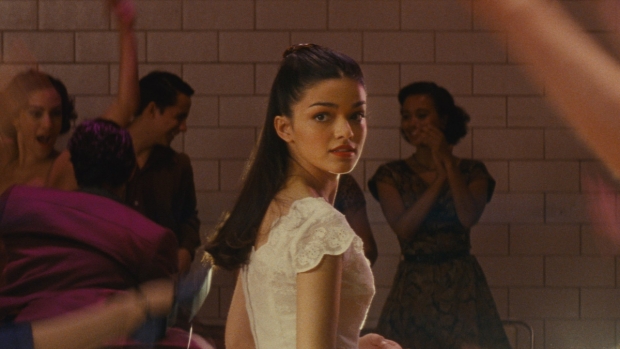West Side Story – ten differences between the new movie and the stage show
We run down what’s a bit different in this ”West Side Story”

© 2021 20th Century Studios. Photo by Niko Tavernise
Indeed, this is very much a fresh vision for a timeless tale – so we thought we'd run through some of the more notable changes made to the original stage production and/or 1961 movie. Obviously spoilers (relatively mild!) below – so read on at your own peril…
Tony's backstory
Here's a neat addition – Tony has just come out of the clink when he returns to dance at the gym and is still on parole – meaning even going out to meet Maria is a big risk. It also gives Tony a reforming edge – he wants to do better, make amends after some serious crimes (!) and build bridges. "Something's Coming" is now very much a song of hope.
Valentina
Shock: Doc is dead, his widow Valentina (a wonderful Rita Moreno) taking on his role as Tony's de facto parent, mentor and guiding angel. It's a nice twist and allows the drug store owner to be respected in both Shark and Jet camps.
Cool
While in the original stage show (but not the 1961 movie) "Cool" was essentially a glorified call-to-arms before the bloody Rumble, here the Jet number is a battle of wills between Riff and Tony after Riff acquires a gun. Tony tries to coax the pistol away from his best friend, with the lyrics "don't get hot 'cause man, you've got some high times ahead… You can live it up and die in bed" really taking on a new meaning, giving the tragedy about to occur.

© Disney
Contact
In many ways, the stage show and the original movie sidle into fantasy at times – like when Tony and Maria first lock eyes at the gym and the world falls apart around them. In the new version, their initial meeting is not some otherworldly experience – they tuck themselves behind some bleachers for a smooch.
Somewhere
Rather than a duet between Tony and Maria (god you already have "One Hand, One Heart" guys) – here Moreno sings iconic number "Somewhere" almost as a lament for a forlorn, forgotten or rejected generation. As she is part of an immigrant population, the song also shines as an anthem for those simply wanting to make a home: "There's a place for us/ Somewhere a place for us/ Peace and quiet and open air/ Wait for us somewhere."
Gee, Officer Krupke
Another tune getting a move around compared to the original stage show – this satirical number, featuring some of Sondheim's best lyrics, now feels much more at home before The Rumble rather than after the body count has already started piling up. What the movie is saying is: with proper help – the tragedy to come could have been avoided.
I Feel Pretty
"I Feel Pretty" goes the other way: compared to the 1961 film (and more in keeping with the original stage show) – this number now happens after 'the Rumble – so Maria's joy is completely set against what the audiences know about her brother. There is also some reshuffling with "America" and "Tonight" more in keeping with the stage show.
Anybodys
While the character of Anybodys is shunned and ostracised in most versions of West Side Story, here they are played by nonbinary actor Iris Menas. It adds greater depth to the character and, through their isolation, reflects a period where sweaty, destructive masculinity ruled the streets.
Spanish sections
After the rather off casting in the original 1961 film, it's nice to see Spielberg place great emphasis on the need for authentic representation, both in terms of those on screen and the words being spoken. Kushner has a number of scenes delivered with a great deal of Spanish all, crucially, without subtitles. Canny.
Tony Kushner's book
Kushner's book is littered with new text passages: tweaks to backstory and small scenes that flesh out characters such as Anita's aspirations in the fashion industry or Bernado's boxing career. It's a 160-minute movie that justifies every second.












